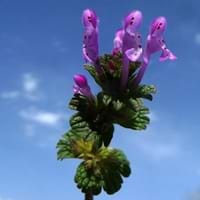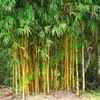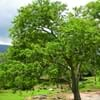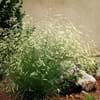Life Span
Perennial
Annual
Origin
China
Eastern Europe, Southern Europe, Mediterranean, Northern Africa, Central Asia, Western Asia
Types
Not Available
Not Available
Habitat
Forest margins, gardens, Grassland, Tropical regions
Cultivated Beds
USDA Hardiness Zone
8-15
Not Available
AHS Heat Zone
12 - 1
12 - 1
Sunset Zone
H1, H2, 8, 9, 14, 15, 16, 17, 18, 19, 20, 21, 22, 23, 24
Not Available
Habit
Clump-Forming
Prostrate/Trailing
Minimum Width
Not Available
Flower Color
Not Available
Hot Pink, Fuchsia, Violet
Flower Color Modifier
Bicolor
Bicolor
Fruit Color
Not Available
Not Available
Leaf Color in Spring
Light Green, Dark Green
Green, Purple, Gray Green
Leaf Color in Summer
Light Green
Green, Purple, Gray Green
Leaf Color in Fall
Light Green, Dark Green
Green, Purple, Gray Green
Leaf Color in Winter
Light Green, Dark Green
Light Green
Leaf Shape
Grass like
Lobed
Plant Season
Spring, Summer, Fall, Winter
Spring, Fall, Winter
Sunlight
Full Sun, Partial Sun, Partial shade
Full Sun, Partial Sun, Partial shade, Full Shade
Type of Soil
Loam, Sand
Clay, Loam, Sand
The pH of Soil
Acidic, Neutral, Alkaline
Acidic, Neutral, Alkaline
Soil Drainage
Average
Average
Bloom Time
Not Available
Early Spring, Spring, Late Spring, Early Summer, Fall, Late Fall, Early Winter
Tolerances
Drought
Not Available
Where to Plant?
Ground, Pot
Ground
How to Plant?
Seedlings, Transplanting
Divison, From Rhizomes, Layering, Seedlings
Plant Maintenance
Medium
Low
Watering Requirements
Keep the ground moist but not water-logged, Requires regular watering, Use and maintain water-efficient soaker hoses, Use Mulches to help prevent water loss during hot and windy weather, Water every two or three days during warmer months, Water twice a day in the initial period
Water occasionally
In Summer
Lots of watering
Lots of watering
In Spring
Moderate
Moderate
In Winter
Average Water
Average Water
Soil pH
Acidic, Neutral, Alkaline
Alkaline, Neutral, Slightly Acidic, Slightly Alkaline
Soil Drainage Capacity
Average
Dry
Sun Exposure
Full Sun, Partial Sun, Partial shade
Full Sun, Partial shade
Pruning
Remove damaged leaves, Remove dead branches, Remove dead leaves
Remove damaged leaves, Remove dead branches, Remove dead leaves
Fertilizers
All-Purpose Liquid Fertilizer
Not Available
Pests and Diseases
Red blotch
Not Available
Plant Tolerance
Drought
Not Available
Flower Petal Number
Single
Single
Fragrant Bark/Stem
No
Yes
Foliage Texture
Medium
Medium
Foliage Sheen
Matte
Matte
Attracts
Birds
Bees, pollinators
Allergy
no allergic reactions
Anti-inflammatory, Antimicrobial, Antioxidants, Flavonoids
Aesthetic Uses
Beautification
Beautification, Cottage Garden, Showy Purposes
Beauty Benefits
Not Available
Not Available
Environmental Uses
Air purification
Not Available
Medicinal Uses
Not Available
Antirheumatic, Diaphoretic, Febrifuge, Laxative
Part of Plant Used
Whole plant
Flowers, Leaves, Stem
Other Uses
Culinary use, Used in construction, Used in Furniture, Used in making musical instruments, Used in paper industry
Used As Food
Used As Indoor Plant
No
No
Used As Outdoor Plant
Yes
Yes
Garden Design
Container, Feature Plant, Hedges, Screening / Wind Break, Tropical
Edible
Botanical Name
BAMBUSA multiplex 'Alphonso-Karrii'
LAMIUM amplexicaule
Common Name
Alphonse Karr Bamboo, Clumping Bamboo, Hedge Bamboo
Henbit, Henbit Deadnettle
In Hindi
अल्फोंस Karr बांस
henbit deadnettle
In German
Alphonse Karr Bamboo
henbit deadnettle
In French
Alphonse Karr Bamboo
henbit deadnettle
In Spanish
Alphonse Karr Bambú
deadnettle henbit
In Greek
Alphonse Karr Μπαμπού
αυλακόχορτου deadnettle
In Portuguese
Alphonse Karr Bamboo
henbit deadnettle
In Polish
Alphonse Karr Bamboo
Henbit jasnota
In Latin
Alphonse Karr Bamboo
henbit deadnettle
Phylum
Not Available
Magnoliophyta
Class
Not Available
Magnoliopsida
Clade
Angiosperms, Commelinids, Monocots
Angiosperms, Asterids, Eudicots
Tribe
Bambuseae
Not Available
Subfamily
Bambusoideae
Not Available
Number of Species
Not Available
Importance of Alphonse Karr Bamboo and Henbit Deadnettle
Want to have the most appropriate plant for your garden? You might want to know the importance of Alphonse Karr Bamboo and Henbit Deadnettle. Basically, these two plants vary in many aspects. Compare Alphonse Karr Bamboo and Henbit Deadnettle as they differ in many characteristics such as their life, care, benefits, facts, etc. Every gardener must at least have the slightest clue about the plants he wants to plant in his garden. Compare their benefits, which differ in many ways like facts and uses. The medicinal use of Alphonse Karr Bamboo is Not Available whereas of Henbit Deadnettle is Antirheumatic, Diaphoretic, Febrifuge and Laxative. Alphonse Karr Bamboo has beauty benefits as follows: Not Available while Henbit Deadnettle has beauty benefits as follows: Not Available.
Compare Facts of Alphonse Karr Bamboo vs Henbit Deadnettle
How to choose the best garden plant for your garden depending upon its facts? Here garden plant comparison will help you to solve this query. Compare the facts of Alphonse Karr Bamboo vs Henbit Deadnettle and know which one to choose. As garden plants have benefits and other uses, allergy is also a major drawback of plants for some people. Allergic reactions of Alphonse Karr Bamboo are no allergic reactions whereas of Henbit Deadnettle have Anti-inflammatory, Antimicrobial, Antioxidants and Flavonoids respectively. Having a fruit bearing plant in your garden can be a plus point of your garden. Alphonse Karr Bamboo has no showy fruits and Henbit Deadnettle has no showy fruits. Also Alphonse Karr Bamboo is not flowering and Henbit Deadnettle is not flowering . You can compare Alphonse Karr Bamboo and Henbit Deadnettle facts and facts of other plants too.





